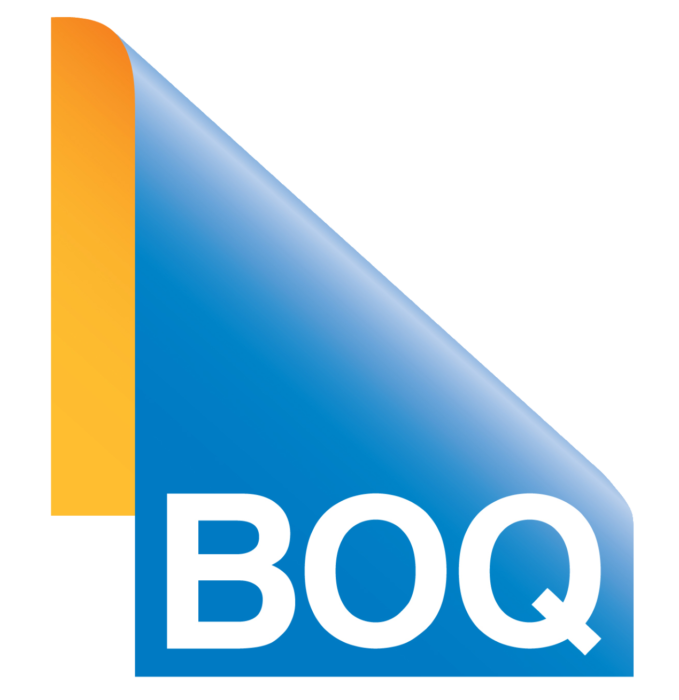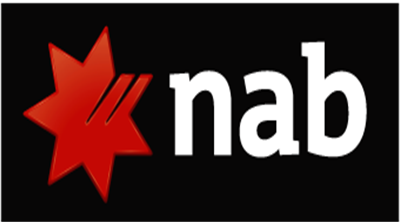The revenue and cash earnings decline hasn’t impacted NAB’s appetite to invest in digital initiatives. NAB CEO Ross McEwan revealed a greater focus on digital transformation announcing the 1H20 results.
In a decision reminding his five focus areas, Mr McEwan announced a new organisational structure with five end-to-end banking businesses “designed around customers”: Personal, Business & Private, Corporate & Institutional, Bank of New Zealand and UBank.
Acknowledging the work done by his predecessors and the tech team, Mr Ross said: “work over recent years has made inroads into removing complexity, uplifting digital capability and establishing strong foundations in technology.”

We have a medium-term focus on standardising and simplifying our architecture to reduce the number of core systems and provide more consistent outcomes for customers and colleagues
CEO Ross Mcewan
Technology Transformation
The results reveal “greater focus on digital and delivery by elevating UBank and Strategy & Innovation”. This includes cloud-first agenda, reduction in legacy footprint and investments in tech modernisation.
NAB also acknowledged areas of improvement including “lack of appeal among younger customers”.
Cloud First Agenda
- 33% of IT applications migrated to the cloud
- Acknowledging the importance of cloud, NAB credited cloud capability as critical to the rapid increase in remote working during COVID-19 times
- 9% reduction in IT legacy applications since FY17
- Increased reliability for apps migrated to cloud and lower run cost
- 63% of simple consumer product sales are now via digital against 65% target
We are continuing to migrate IT applications to lower cost cloud platforms.
Execution will underpin our success
In Comparison:

- On track to reduce the number of apps running on “too much infrastructure”
- Home Lending is now 80% digital end-to-end using PEXA on the back end
- Plan to reduce app footprint by 25%
- Aligns with the strategy of becoming a “simple bank”
- Major cloud migration program is underway
- Aims to achieve about 95% on the cloud
- A whopping 64% of total transactions (by value) are digital
Macquarie Bank:
- 100% cloud target by FY22
- Rebuilt its tech stack with a single core banking system for lending and retail
- Focus on client journeys and customer experience
- Embedding “Human Centric Design” in technology initiatives
- Mapped 15 customer journeys embedding elements of Human-Centred Design
Suncorp:
- Suncorp’s customer engagement via digital varies from a low of 18% in digital claims to an impressive 59% in banking division’s new business sales. NAB ‘s digital share of “simple product sales” stands at 63%

Bank of Queensland:
- Innovative digital offering and loyalty
- New mobile app for BOQ Specialist with Apple Pay
- Investment in Virgin Money Australia new cloud-based digital bank and loyalty program
- Strategy to transition customers to new multi-brand cloud-based banking platforms
Disruption of a different kind
NAB claims “critical technology reliability and security vigilance” maintained throughout. However, the big bank still experiences a critical incident a month. With bigtech making rapid inroads and neobanks affecting customer base, “outage a month” is not going to be ignored by the customers
Here’s the list of “improvements” NAB claims to have made with investment in technology driving lower incidents since 2014:
- 97% reduction in “High” priority incidents
- 85% reduction in of “Critical” priority incidents
- 74% reduction in critical and high severity incidents since FY17
- 43% decline in ‘Critical and High’ incidents in 1H20
According to NAB statistics, there seems to be a reduction in the number of critical and high priority incidents. We hope the good folks at NAB realise a lot has changed since 2014. In a world where customers have plenty of choices, are the old benchmarks valid anymore? In 2019, NAB stood out for reasons beyond business: Data breach and outages. Disruption of a different kind.
Insourcing vs Outsourcing
- Strategic investment in insourcing technical expertise
- 42% reduction in key vendor infrastructure run costs since FY16
- Strategically insourced capabilities include networks services and workplace technology
- Sourcing of Technical FTE: Insourcing at 51%, Outsourcing 49%
Upskilling Initiative
- Greater focus on upskilling technology capability
- Over 1,000 employees industry-certified in Amazon Web Services (AWS), Microsoft Azure and Google Cloud Platform
- About 16,000 licenses had been issued for employee learning
- Employees have access to 250,000 digital learning opportunities through leading platforms including LinkedIn Learning
- Over 30,000 hours of digital learning completed through the deployment of six industry-leading platforms

Technology Improvement Areas
- Greater focus on digital and delivery by elevating UBank and Strategy & Innovation
- Improved digital and decision-making
- Aiming to be an easy, simpler, more seamless and digitally-enabled bank
- Radically simpler with digital-first propositions
- Easy customer experience
- One single mortgage experience
Business Improvement Areas
NAB has identified multiple improvement areas affecting business and customer experience.
- Slow to respond and then deliver in key customer experiences
- Inconsistent experiences from bankers and channels
- Negative NPS
- Strategic Net Promoter Score (NPS) for March 2020 up 3 points over the year to -18
- In comparison, leading neobank 86 400 boasts of an impressive NPS at 46
- Unveiling the H1FY20 results, Macquarie Group’s Head of Banking and Financial Services stated Macquarie bank is proactively measuring NPS at specific points.
- Suncorp revealed it is tracking NPS to measure client advocacy and customer experience even as executive remunerations are tied to NPS (about 20%).
- Historically low market share among younger customers
- UBank – 17% growth in customer numbers over the year. In comparison 86 400 has NPS at 46 and targeting $2bn mortgage book by the end of 2021

In comparison, Bank of Queensland listed the following business improvement areas:
- Multiple banking systems through acquisitions (15 core product platforms)
- Lagging in digital and data platforms, requiring new investment
- Need to build execution capability
- Declining customers NPS
- Poor digital experience for customers and bankers
ANZ Bank Highlights

In comparison, ANZ Bank’s technology expenses increased by 10% as a result of a change in accounting treatment associated with the new leasing standard and an increase in tech investment. Rewarding ANZ bank’s technology leadership for the digital strategy, current Chief Data Officer Mrs Emma Gray has been appointed Group Executive, Data and Automation.
- Technology spending: About A$75 million on infrastructure, A$155 million on digital, data, and payments.
- Analysing client behaviour and investing in digital initiatives for future opportunities.
- ANZ said the effective use of data, insights and automation will be key in preparing the bank for the future, particularly in responding to the challenges presented by COVID-19
New Investments
NAB announced significant investments in technology modernisation and resilience. In addition, it’s on track to achieve the $2bn lending commitment to emerging technology companies by 2025, with over $500m to date provided for the fast-growing fintech sector.
In a recent development, ANZi ventures, the corporate venture capital arm of ANZ Bank invested in a global payments fintech leader Airwallex.
CBA also has big investments in Institutional banking – investments in the underpinning infrastructure and systems, everything from the KYC onboarding process to the institutional lending system.
The investments and partnerships with Klarna and Microsoft reflect the importance CBA has given to local and international partners. The CEO was quick to highlight CBA’s progress with Klarna within the first 2 weeks. “We have had about 25,000 registrations in less than two weeks”
Priorities – Path Ahead

NAB listed four priority areas for the future in alignment with the focus areas of the bank. In line with the focus areas, NAB’s digital strategy includes:
- Embedding new ways of working
- Digitising and simplifying key customer experiences starting with lending
- Accelerate innovation, Data/analytics
- Digitisation while reducing costs
We have also refreshed our longer term strategic focus
In comparison:
Suncorp:
- Zero Touch Claims capability
- AI and Data Analytics
- App parity with Banking app and improved user experience
- Single Customer View
- Development of new Identity management capability aligning with consumer data right
- Leveraging APIs to unlock customer data for multiple customer initiatives
CBA:
- Modernisation Agenda to continue
- To reduce the number of apps running on “too much infrastructure”.
- Application Portfolio Optimisation to reduce footprint by over 800 apps
- Simplified Bank – a major priority
- Digitisation with High level of Availability and resilience
- Data Lineage, Quality and Governance
COVID-19 Impact
We have been talking to tens of thousands of businesses and they’re hurting badly, they’re hurting very badly
CEO Ross McEwan
NAB revealed “moving rapidly” to mobilise its workforce to work from home, launch customer support packages and enable the frontline staff to respond.
Mr McEwan said, “Our ability to deliver this reflects strong foundations laid over recent years to lift our technology, digital and procurement capabilities, and the quality and adaptability of our people”. Cloud-based digitisation tools enabled COVID-19 eforms to go live within 72hours.
Upskilling Program
NAB also revealed over 800 employees have been reassigned to its front line, call centres and operations teams to manage unprecedented demand.
Over 80% of employees are working remotely with over 30,000 employees starting work remotely within 3 weeks. About 98% of operational staff started work remotely within a week.
About 10-15% of daily security alerts are related to COVID-19 cyber threats. The bank revealed the security tools implemented are helping to better repel COVID-19 related cyber threats.
As NAB is the largest lender to small and medium-sized businesses in the country, Mr McEwan said the COVID-19 crisis had been a sudden shock for these customers of NAB, with their incomes impacted in less than a week.
As the COVID-19 pandemic rages, enterprises small and large are impacted in ways never experienced before. The CEO of ANZ Bank Mr Shayne Elliott in his message on ANZ’s preparedness to manage COVID-19 impact detailed the four-pronged strategy.













